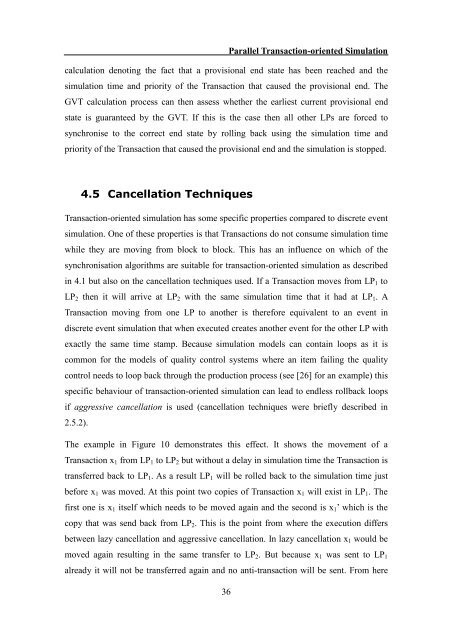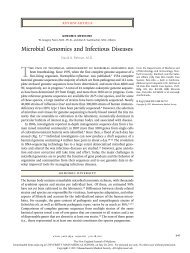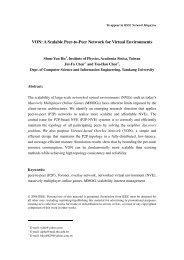3.1 MB - Evernote
3.1 MB - Evernote
3.1 MB - Evernote
Create successful ePaper yourself
Turn your PDF publications into a flip-book with our unique Google optimized e-Paper software.
36<br />
Parallel Transaction-oriented Simulation<br />
calculation denoting the fact that a provisional end state has been reached and the<br />
simulation time and priority of the Transaction that caused the provisional end. The<br />
GVT calculation process can then assess whether the earliest current provisional end<br />
state is guaranteed by the GVT. If this is the case then all other LPs are forced to<br />
synchronise to the correct end state by rolling back using the simulation time and<br />
priority of the Transaction that caused the provisional end and the simulation is stopped.<br />
4.5 Cancellation Techniques<br />
Transaction-oriented simulation has some specific properties compared to discrete event<br />
simulation. One of these properties is that Transactions do not consume simulation time<br />
while they are moving from block to block. This has an influence on which of the<br />
synchronisation algorithms are suitable for transaction-oriented simulation as described<br />
in 4.1 but also on the cancellation techniques used. If a Transaction moves from LP1 to<br />
LP2 then it will arrive at LP2 with the same simulation time that it had at LP1. A<br />
Transaction moving from one LP to another is therefore equivalent to an event in<br />
discrete event simulation that when executed creates another event for the other LP with<br />
exactly the same time stamp. Because simulation models can contain loops as it is<br />
common for the models of quality control systems where an item failing the quality<br />
control needs to loop back through the production process (see [26] for an example) this<br />
specific behaviour of transaction-oriented simulation can lead to endless rollback loops<br />
if aggressive cancellation is used (cancellation techniques were briefly described in<br />
2.5.2).<br />
The example in Figure 10 demonstrates this effect. It shows the movement of a<br />
Transaction x1 from LP1 to LP2 but without a delay in simulation time the Transaction is<br />
transferred back to LP1. As a result LP1 will be rolled back to the simulation time just<br />
before x1 was moved. At this point two copies of Transaction x1 will exist in LP1. The<br />
first one is x1 itself which needs to be moved again and the second is x1’ which is the<br />
copy that was send back from LP2. This is the point from where the execution differs<br />
between lazy cancellation and aggressive cancellation. In lazy cancellation x1 would be<br />
moved again resulting in the same transfer to LP2. But because x1 was sent to LP1<br />
already it will not be transferred again and no anti-transaction will be sent. From here
















